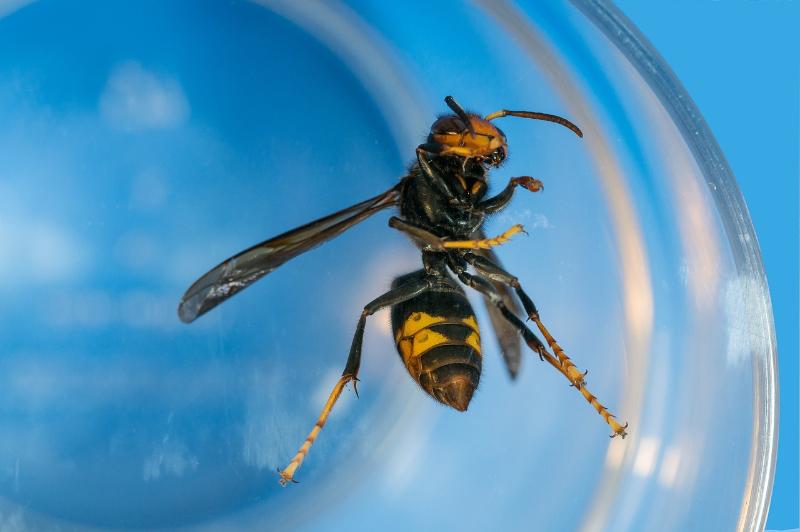
Yellow-legged hornet update
Earlier this month the Department for Environment, Food and Rural Affairs (Defra) confirmed a total of 44 UK yellow-legged hornet (Vespa velutina) sightings in 2024 to-date. As was the case in 2023, most of these sightings occurred in Sussex and Kent.
During 2023 there were 72 Yellow-legged hornet nests found in 56 locations; the highest number since records began in 2016. Whilst this led several media reports to suggest the pest is now established in the UK, this has not been confirmed by Defra.
Yellow-legged hornets and their nests are regularly identified and destroyed during the summer months. The risk of establishment is higher in the south of the country, as specimens enter the country via ports, having caught a lift off lorries and cross-channel ferries from the continent where the species is established. The warmer, milder climate in the south of the country further aids establishment.
What does the yellow-legged Hornet look like?
- Dark brown abdomen, with a yellow band on the 4th ‘segment’
- Head dark when viewed from above, or orange from front
- Dark-coloured antennae
- Legs yellow at the ends
- Queen up to 30mm long, worker up to 25mm long


Whilst the yellow-legged hornet poses no greater risk to humans than native hornets or bees, it does pose a risk to native honeybees and insects. Yellow-legged hornets are predators of honeybees and there are fears that, if established in the UK, would result in a significant decline in the number of native honeybees.
Further reading
Suspected sightings of the yellow-legged hornet should be reported immediately to the Great British Non-Native Species Secretariat (NNSS) immediately, by visiting this website. Alternatively, sightings can be emailed to alertnonnative@ceh.ac.uk, complete with photos.

